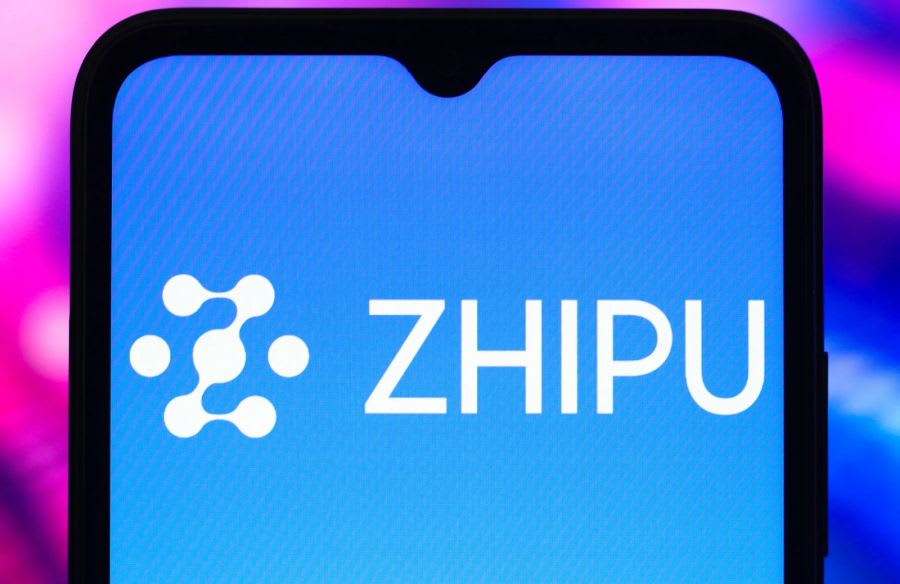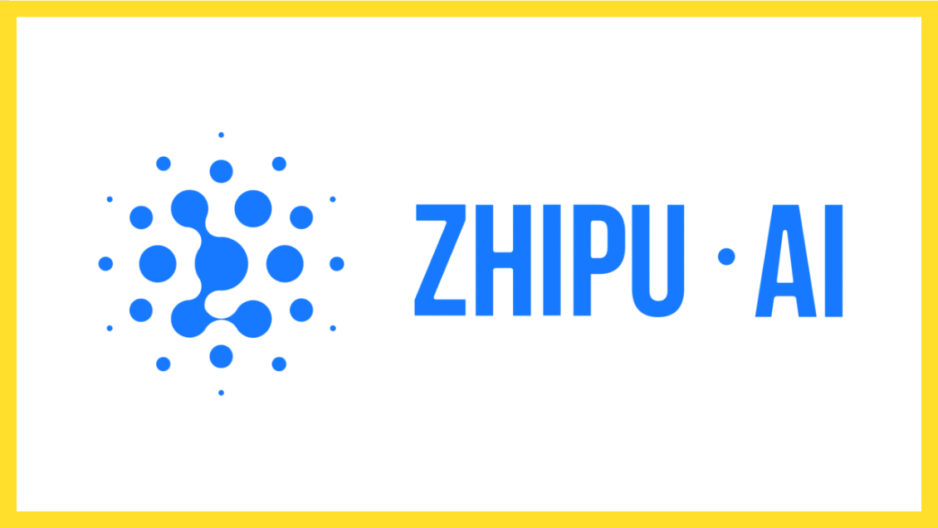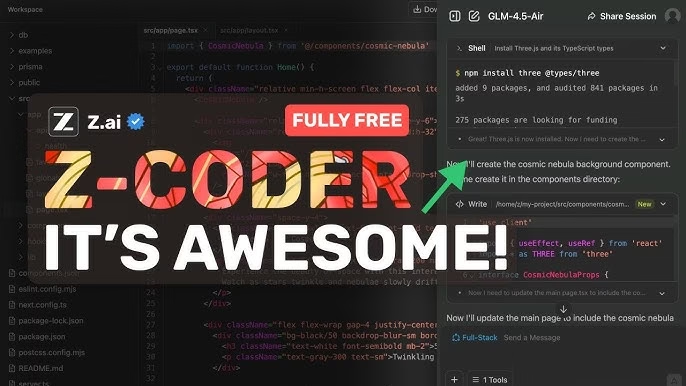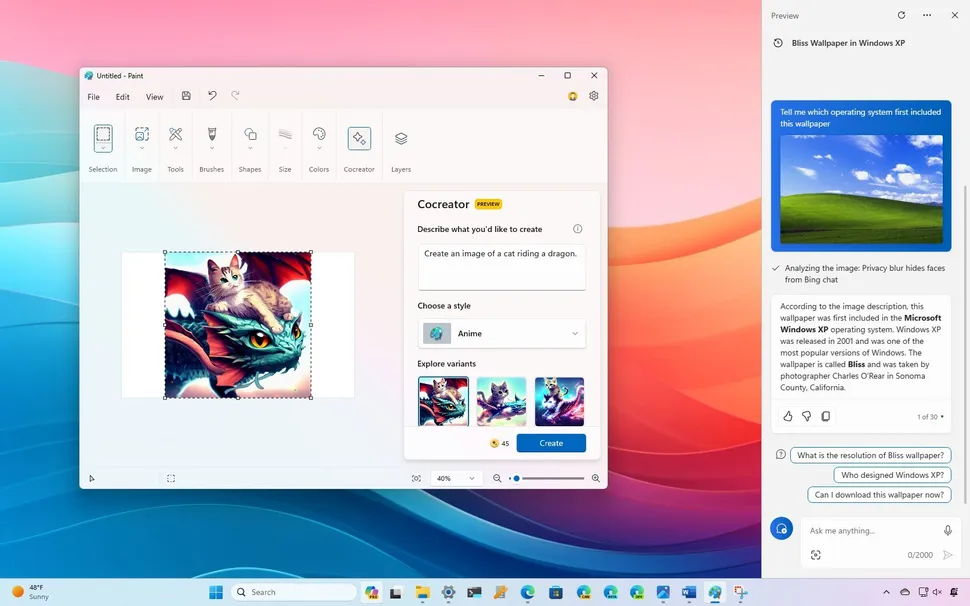Unveiling Z.ai GLM-4.5 Cheaper Open-Source AI
Estimated reading time: 10 minutes
Key Takeaways
- Z.ai GLM-4.5 is positioned as a revolutionary cheaper open-source AI model, drastically reducing access barriers to advanced LLM capabilities.
- Developed by Z.ai (formerly Zhipu AI), GLM-4.5 represents China’s most advanced open-source AI, signaling a significant shift in the global AI landscape.
- Its innovative Mixture of Experts (MoE) architecture allows for high performance with remarkable computational efficiency, setting it apart from many traditional models.
- A direct comparison reveals that the Zhipu AI GLM-4.5 vs OpenAI cost demonstrates GLM-4.5’s superior affordability, especially through self-hosting options.
- GLM-4.5’s native *reasoning, coding, and agentic* abilities make it ideal for building sophisticated intelligent agent applications across various industries.
- The model is set to democratize advanced AI access, fostering innovation and challenging established market players with its competitive price-to-performance ratio.
Table of contents
- 1. Introduction: Unveiling Z.ai GLM-4.5 – The Future of Cheaper Open-Source AI
- 2. What is Z.ai GLM-4.5? A Deep Dive into China’s Most Advanced Open-Source AI
- 3. The Cost Revolution: Zhipu AI GLM-4.5 vs OpenAI Cost Comparison
- 4. Under the Hood: GLM-4.5 Mixture of Experts Model Explained
- 5. Beyond the Hype: Practical Intelligent Agent Applications of GLM-4.5
- 6. Market Impact and the Future of Open-Source AI
- 7. Conclusion: Embracing the Affordable and Powerful Future with Z.ai GLM-4.5
- Frequently Asked Questions
1. Introduction: Unveiling Z.ai GLM-4.5 – The Future of Cheaper Open-Source AI
The landscape of Artificial Intelligence is evolving at an unprecedented pace, constantly pushing the boundaries of what’s possible. From automating mundane tasks to powering groundbreaking scientific discoveries, AI’s impact is undeniable, fundamentally changing the world as we know it. This rapid evolution, however, has also fueled a relentless demand for solutions that are not only *powerful* but also *accessible* and *affordable* for a wider range of innovators. Enter Z.ai.
Z.ai, formerly recognized as Zhipu AI, has officially unveiled its latest large language model (LLM), GLM-4.5. This release is poised to be a significant disruptor, reshaping the global AI landscape with its emphasis on accessibility and performance. What makes GLM-4.5 particularly compelling? It immediately stands out due to its core advantage: it’s a truly Z.ai GLM-4.5 cheaper open-source AI solution, making state-of-the-art LLM capabilities more widely available than ever before. This move signals a significant step towards democratizing advanced AI, offering a robust alternative that promises both power and unparalleled affordability.

In this comprehensive blog post, we aim to provide an in-depth exploration of GLM-4.5’s remarkable capabilities, its groundbreaking cost-effectiveness, and its potential impact on the broader AI market. We’ll delve into how this Z.ai GLM-4.5 cheaper open-source AI model directly addresses the pressing need for more accessible yet high-performing AI tools, offering valuable insights for developers, researchers, and businesses alike. Get ready to discover a new frontier in intelligent systems.
2. What is Z.ai GLM-4.5? A Deep Dive into China’s Most Advanced Open-Source AI
Developer Background
To fully appreciate the significance of Z.ai GLM-4.5, it’s essential to understand its origins. Z.ai is the fresh international brand for Zhipu AI, one of China’s leading frontier AI research laboratories. This rebranding effort signifies Zhipu AI’s strategic intent to enhance its global recognition and expand its reach beyond its domestic market, bringing its cutting-edge innovations to a worldwide audience.

Technological Significance and Positioning
GLM-4.5 is not just another LLM; it is strategically positioned as China’s most advanced open-source AI model. This emphasizes its critical importance from both a technological prowess and a geopolitical perspective, showcasing the innovation emerging from the Chinese AI sector. A key differentiator for GLM-4.5 is its sophisticated Mixture of Experts (MoE) architecture. This design, which is still uncommon among open-source models, enables superior efficiency and performance by selectively activating specific “expert” sub-networks based on the input, rather than engaging the entire model.
Model Variants and Parameters
The flagship Z.ai GLM-4.5 model is a testament to modern AI engineering. It boasts an impressive *355 billion total parameters*, demonstrating its vast knowledge capacity and intricate understanding of language. Crucially, however, it leverages its MoE architecture to ensure that a far more efficient *32 billion parameters* are active during inference for any given task. This allows for high performance without the prohibitive computational overhead of dense models.
Recognizing diverse application needs, Z.ai has also introduced GLM-4.5-Air, a lighter yet highly capable variant. This model contains *106 billion total parameters* with a streamlined *12 billion active* during inference. GLM-4.5-Air is specifically designed for scenarios where greater efficiency and faster response times are paramount, offering developers flexibility in deployment based on their specific requirements.
Performance Benchmarks
According to Z.ai’s self-reported benchmark results, GLM-4.5 has achieved remarkable standings. It secured an impressive *2nd place globally overall* and clinched *1st place among domestic and open-source models* in critical reasoning, coding, and agentic benchmark tasks. These results underscore GLM-4.5’s competitive edge and its ability to rival, and in some areas surpass, leading proprietary models in key performance metrics.

3. The Cost Revolution: Zhipu AI GLM-4.5 vs OpenAI Cost Comparison
Affordability Advantage
One of the most compelling aspects of Z.ai GLM-4.5 is its profound impact on affordability. By being open-sourced under the highly permissive MIT license, this model becomes notably less expensive for both research and commercial applications when compared to proprietary solutions. Think of the significant costs associated with using services like OpenAI’s GPT-4 or GPT-4o, which are based on token usage. GLM-4.5 stands as a truly Z.ai GLM-4.5 cheaper open-source AI alternative, designed to democratize access to advanced LLMs.

Open Resource Availability
Further cementing its open and accessible nature, the model weights for GLM-4.5 are openly available on leading platforms such as Hugging Face and ModelScope. This ready availability is a game-changer. It empowers users with the crucial option for *self-hosting*. Why is this so important? Self-hosting allows users to significantly reduce or even eliminate the recurring usage fees that are typically associated with API-only access from U.S.-based cloud providers, which is a common and often costly model for services like OpenAI. The shift from a pay-per-token model to a more controllable infrastructure cost model can lead to substantial savings for high-volume users.
Direct Comparison: Zhipu AI GLM-4.5 vs OpenAI Cost
Let’s delve deeper into the financial implications for developers and businesses by looking at the Zhipu AI GLM-4.5 vs OpenAI cost. Unlike OpenAI’s token-based API pricing, where every input and output character contributes to your bill, GLM-4.5’s open-source nature means the primary cost shifts to the infrastructure required for self-hosting. This fundamental difference is key. For many organizations, particularly those with existing hardware or the ability to optimize their cloud compute, this translates into considerably lower overall operational expenses for high-volume or specialized use cases. You control your hardware, you control your costs.
Broader Economic Implications
These lower barriers to entry have profound economic implications. They empower a wider range of developers, startups, and researchers to build and deploy advanced AI solutions without being constrained by prohibitive API costs. Imagine small businesses, educational institutions, or independent developers suddenly having access to top-tier LLM capabilities. This affordability could fundamentally democratize access to LLM-driven applications globally and significantly accelerate innovation across various industries. It fosters an environment where ingenuity, not just deep pockets, drives AI advancement.
4. Under the Hood: GLM-4.5 Mixture of Experts Model Explained
Introduction to MoE Architecture
To truly understand the efficiency and power of GLM-4.5, we must delve into its underlying architecture: the GLM-4.5 Mixture of Experts model explained. At its core, this architecture operates by dividing the model into several specialized “expert” sub-networks. Think of these as distinct, highly skilled specialists within the model, each proficient in different aspects of language or reasoning.

The magic happens when an input is provided. Instead of engaging the entire massive model, a sophisticated “router” or “gate” network dynamically selects and activates *only a specific subset* of these experts that are most relevant to the given task or query. This selective activation is a key differentiator from traditional “dense” models, where every part of the model is engaged for every operation, leading to significantly higher computational demands.
Efficiency Gains and Performance
Let’s elaborate on the practical benefits of this “sparse activation.” While Z.ai GLM-4.5 boasts a massive *355 billion total parameters*—an indicator of its immense knowledge capacity and potential—only a smaller, more manageable portion, specifically *32 billion parameters*, are actively engaged during inference for any particular task.
This ingenious design allows GLM-4.5 to achieve remarkably high capacity while simultaneously demanding significantly lower computational resources per individual task. The result? It can rival or even surpass the performance of much larger, fully dense models while using a fraction of the compute power. This translates directly into faster processing times and reduced energy consumption, making advanced AI both more efficient and environmentally friendly.
Flexible Operating Modes
Adding to its versatility, GLM-4.5 supports distinct operating modes. There’s a “thinking” mode, ideal for complex reasoning tasks and sophisticated tool-use scenarios where deeper analysis is required. Conversely, a “non-thinking” mode is available for faster, more straightforward responses where rapid throughput is prioritized. This inherent flexibility allows users to intelligently trade off between speed and depth of processing, tailoring the model’s behavior precisely to their specific application requirements. Whether you need deep analytical power or lightning-fast conversational capabilities, GLM-4.5 provides the tools to optimize your AI solution.
5. Beyond the Hype: Practical Intelligent Agent Applications of GLM-4.5
Native Agentic Abilities
One of the standout features of Z.ai GLM-4.5 is its native integration of advanced *reasoning, coding, and agentic* functions. Unlike other models that might require extensive prompting or external frameworks to achieve agent-like behavior, GLM-4.5 comes equipped with these capabilities baked in. This makes it exceptionally well-suited to address the complex requirements of modern intelligent agent applications GLM-4.5, from advanced chatbots capable of nuanced conversations to sophisticated task automation and decision-support tools that can operate with a high degree of autonomy.

Real-World Use Cases and Examples
The practical applications of GLM-4.5 are vast and varied. Let’s consider some concrete examples of how this powerful model can be leveraged:
- Automated Coding Assistants: With its robust coding capabilities, GLM-4.5 can serve as an invaluable tool for developers. It’s capable of generating code snippets, performing complex debugging, and assisting in comprehensive software development workflows, significantly boosting productivity.
- Sophisticated Customer Support or Workflow Bots: Imagine intelligent agents that can handle multi-turn conversations with a deep understanding of context, process complex customer queries with high accuracy, and automate intricate business processes, freeing human agents for more complex issues. GLM-4.5 makes this a reality.
- End-to-End AI-Powered Web Applications: GLM-4.5 can serve as the core intelligence driving dynamic user interactions and complex backend logic in entirely new web applications. This enables the creation of truly smart applications that can adapt, learn, and provide highly personalized experiences.
These examples highlight its capacity to understand context, plan actions based on user input or external data, and execute tasks autonomously or semi-autonomously, a hallmark of true intelligent agents.
Developer Empowerment
The open-access nature and extensive, built-in capabilities of GLM-4.5 significantly empower businesses and engineers. This powerful combination enables them to prototype, develop, and deploy high-functioning AI applications with fewer constraints and at substantially lower costs than previously possible. By removing financial and technical barriers, GLM-4.5 fosters greater innovation across various sectors, inviting a new wave of creativity in AI application development.
6. Market Impact and the Future of Open-Source AI
Global Competition and Geopolitical Significance
The arrival of Z.ai GLM-4.5 marks a pivotal moment in the global AI landscape. By matching or even surpassing the performance benchmarks of leading proprietary models from Western tech giants—such as OpenAI’s GPT-4, Grok 4, and Claude—GLM-4.5 signals a major step forward in international LLM competition. This isn’t just about technological parity; it’s about strategic positioning in the increasingly important domain of AI development and regulation. Furthermore, its role as China’s most advanced open-source AI signifies a substantial advancement from China’s AI sector on the global stage, demonstrating an independent and powerful contribution to the AI ecosystem, even challenging established leaders like Nvidia in AI computing.

Democratization of Advanced AI
Perhaps the most transformative aspect of GLM-4.5 is its potential to fundamentally democratize access to advanced AI technology worldwide. The availability of such a high-performance, cheaper open-source AI model directly addresses the historical barrier of cost and proprietary lock-in. By significantly reducing the hurdles to access and scaling AI solutions, GLM-4.5 fosters greater innovation and inclusion, particularly benefiting developing regions, smaller organizations, and startups with limited resources. This shift empowers a broader global community to participate in and contribute to the AI revolution.
Competitive Trajectory
Z.ai, through models like GLM-4.5, and similar companies are strategically positioning themselves as credible and powerful alternatives to established Western AI titans. This dynamic competition is healthy for the industry. It fosters a more diverse and competitive global AI landscape, driving all players to innovate faster and deliver more value. We can project an increasing trend of collaboration within the open-source community, accelerated advancements in AI technology, and a richer ecosystem of tools and applications, all propelled by this vigorous competitive environment.
7. Conclusion: Embracing the Affordable and Powerful Future with Z.ai GLM-4.5
In summary, Z.ai GLM-4.5 presents a rare and compelling combination that is set to redefine the future of AI. It offers unmatched open-source capability, a groundbreaking cost profile that truly makes it a cheaper open-source AI alternative, and advanced architectural innovations like its efficient Mixture of Experts design. This tripartite advantage positions GLM-4.5 not just as an incremental improvement but as a significant leap forward.
Its potential to drive the next generation of intelligent agent applications and broader AI solutions is immense, simply by providing accessible, high-performance tools to a wider array of developers and businesses. The arrival of GLM-4.5 may fundamentally reshape who gets to build advanced AI, how it is deployed, and how quickly global AI development accelerates. It promises to usher in a more accessible, innovative, and powerful AI future for everyone, fostering an ecosystem where groundbreaking ideas can flourish without prohibitive barriers.

Frequently Asked Questions
Q1: What is the primary advantage of Z.ai GLM-4.5?
A1: Its primary advantage is being a powerful, open-source large language model that offers significantly lower operational costs compared to proprietary alternatives, making it a truly cheaper open-source AI solution.
Q2: How does GLM-4.5 achieve its efficiency?
A2: GLM-4.5 utilizes a Mixture of Experts (MoE) architecture, where only a subset of its total parameters (32 billion out of 355 billion) is actively engaged during inference. This allows it to achieve high performance with much lower computational demands.
Q3: Can GLM-4.5 be self-hosted, and what are the benefits?
A3: Yes, its model weights are openly available, allowing for self-hosting. This eliminates recurring API usage fees common with proprietary models like OpenAI’s, shifting costs to manageable infrastructure and potentially leading to significant savings for high-volume users.
Q4: What kinds of applications can be built with GLM-4.5?
A4: Thanks to its native reasoning, coding, and agentic functions, GLM-4.5 is ideal for intelligent agent applications such as automated coding assistants, sophisticated customer support bots, and end-to-end AI-powered web applications.
Q5: What is the significance of Z.ai GLM-4.5 for the global AI market?
A5: As China’s most advanced open-source AI, GLM-4.5’s performance and affordability will democratize access to advanced AI technology worldwide, fostering greater innovation and creating a more diverse and competitive global AI landscape.






